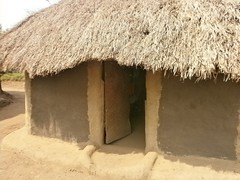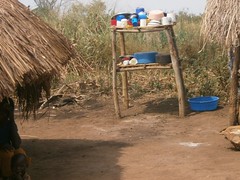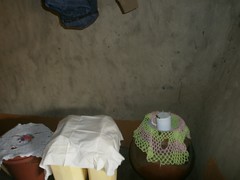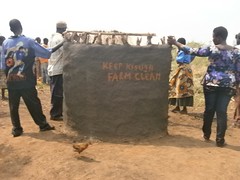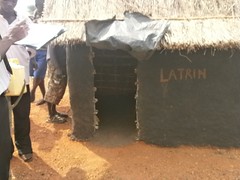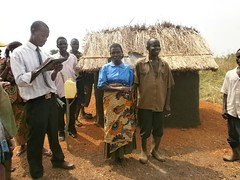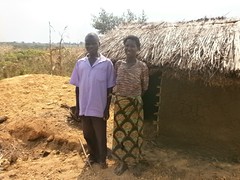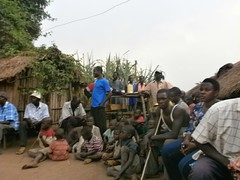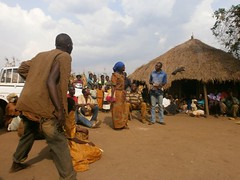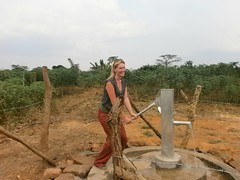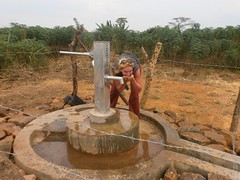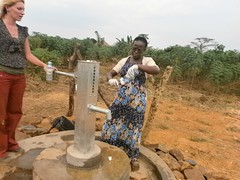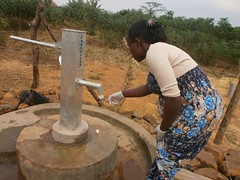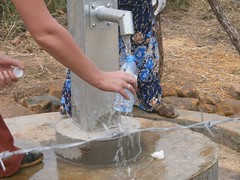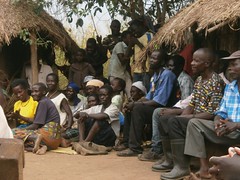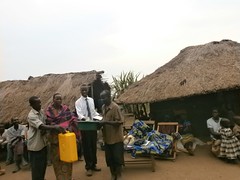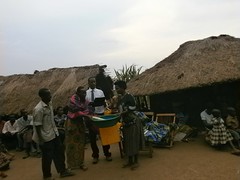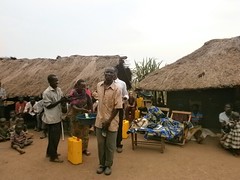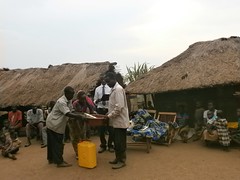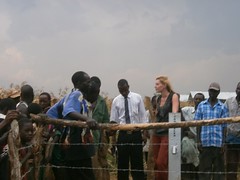The report below from our partner in the field gives some great information on the construction of a new hand-dug well in the Kinumi-Kisuugacommunity in Uganda:
Kinumi-Kisuuga is a small farmer village. The village has 60 households. All the inhabitants of Kinumi-Kisuuga rent the land from a big land owner. The people living in this village come from other areas. Fled from the cruel wars in Northern Uganda and Congo, this community fled to seek refuge in Masindi. Due to the heavy burden of renting, margins of profit for this community are minimal. With little or no mechanization increased agricultural output employing hoe agriculture is a direct function of a 1/1 increase in labor input.
Currently the community uses water from an open source. The water is contaminated as feaces easily access the water. . Drinking water contamination effects can be devastating to the individual and they can impact entire cultures.
Often, people who live in areas without sufficient safe, clean water, learn to live with diarrhea and other drinking water contamination effects. They take it for granted that they are just going to be sick periodically, and it is just a fact of life. Stomach aches become the norm. Fatigue and lethargy become common place.
But where people exist in a continually half-sick condition, their education and livelihoods can never be one hundred percent fruitful and prosperous. So, the condition of the people becomes the condition of the society.
Health and education are severely impacted by a continual lack of safe water. In Africa, or anywhere there is a high incidence of HIV/AIDS, the need for clean water is even greater.
In Kinumi-Kisuuga, households spend a lot of money to cure preventable diseases as diarrhea and stomach aches. This new water source in combination with drastic improvements in their sanitation levels will signify a big difference in the lives of the community members.
[GPS coordinates for this project are approximate.]
Construction Progress:
November 20, 2012
This week the technician has been transferred to Kinumi. For the coming weeks the technician will stay with the community. The community will provide a house and food for the technician. The water table in the area is remarkably high, therefore we sited the well on a hill.
November 27, 2012
The depth of the well is 10 ft. Construction is moving on well. Community participation is good.
Sanitation and Hygiene Progress:
TWT’s social program includes the assignment of one Community Development Officer (CDO) to one village. The CDO encourages each households to build an ideal homestead that includes: a latrine, hand-washing facility, a separate structure for animals, rubbish pit and drying rack for dishes.
Although the main objectives of TWT’s Sanitation and Hygiene Program are the use of latrines and proper hygiene, these goals are inherently connected to the provision of clean water. Open defecation, water storage in unclean containers and the absence of hand washing are all possible contaminators of a household water source. TWT leverages this relationship, by requiring each village to achieve Open Defecation Free statis (defined by one latrine per households), prior to the pump installation for a shallow hand dug well. Using the immediate gratification of clean water as an impetus, TWT works toward sustainable, interdisciplinary WASH development.
TWT implements the Community Led Total Sanitation (CLTS) program with each of our village partners. TWT facilitates a CLTS session in which we aim to improve the sanitation and hygiene practices and behaviors of a village. During these sessions, village leaders naturally emerge and push the community to realize that current practices of individual households – particularly open defecation– are not only unhealthy, but affect the entire village. CLTS facilitates a process in which community members realize the negative consequences of their current water, sanitation and hygiene behaviors and are inspired to take action. Group interactions, embarrassment and shame are frequent motivators for individual households to: build latrines, use the latrines and demand that other households do the same.
November 18, 2012
The sanitation level in this village is very poor. Lynet, the Community Development Officer working in this community found that none of the households have a latrine. In the coming months 40 households will start constructing a latrine, this is a big operation.
November 23, 2012
Today we have brought digging tools for constructing latrines to the community. The community made household digging groups. Each group consists out of 6 households. Each group receives a set of tool and the households help each other with digging the pits.


 Rehabilitation Project
Rehabilitation Project






